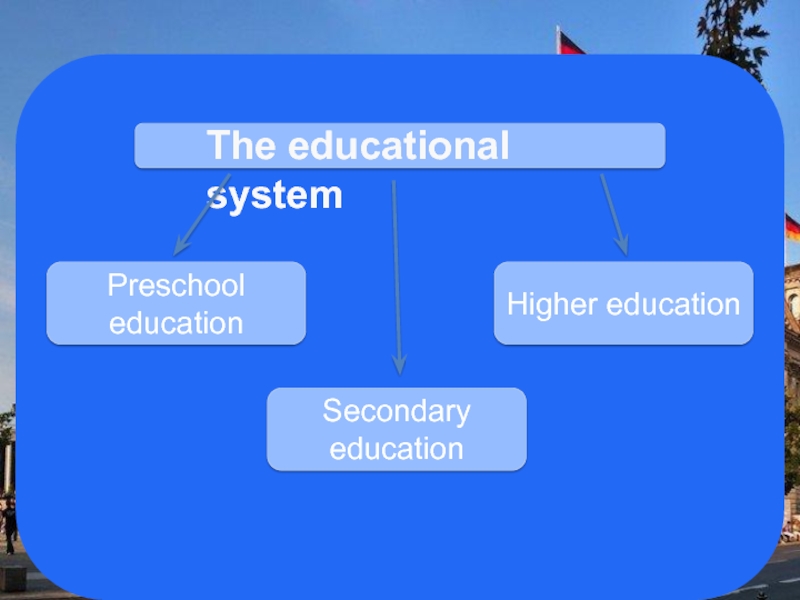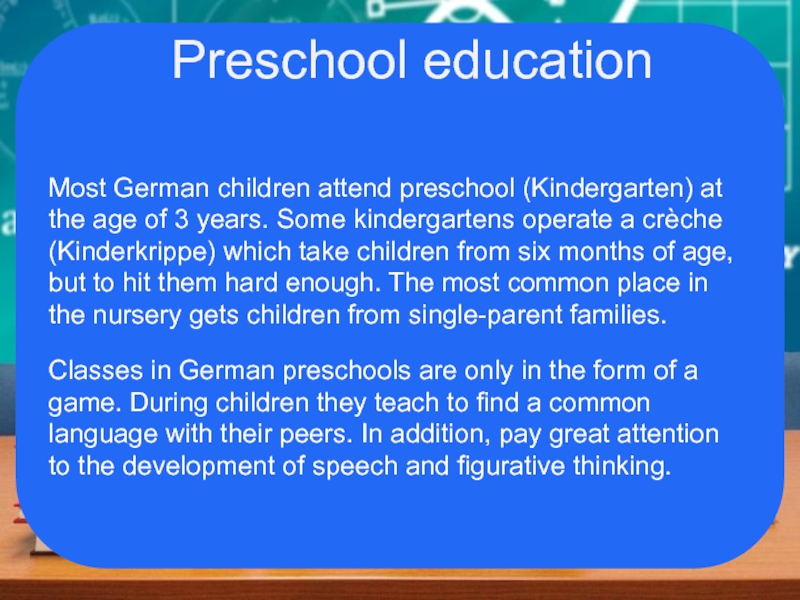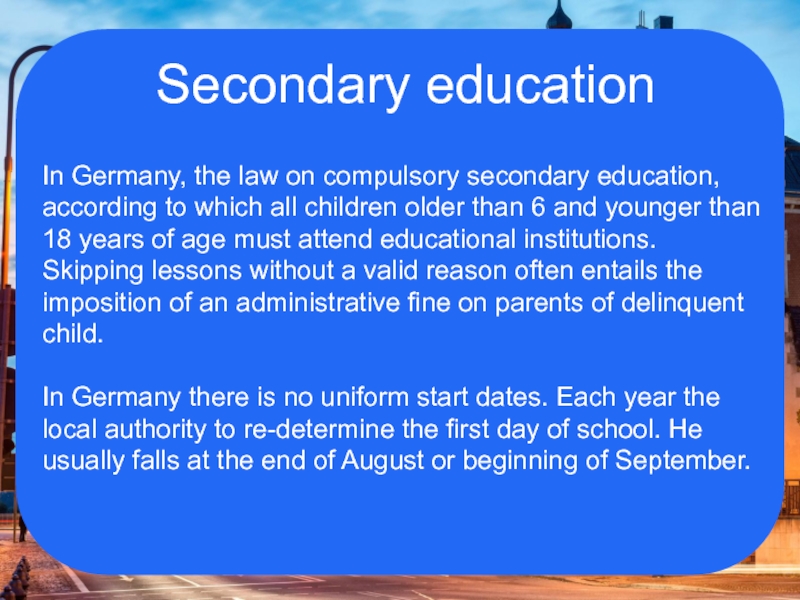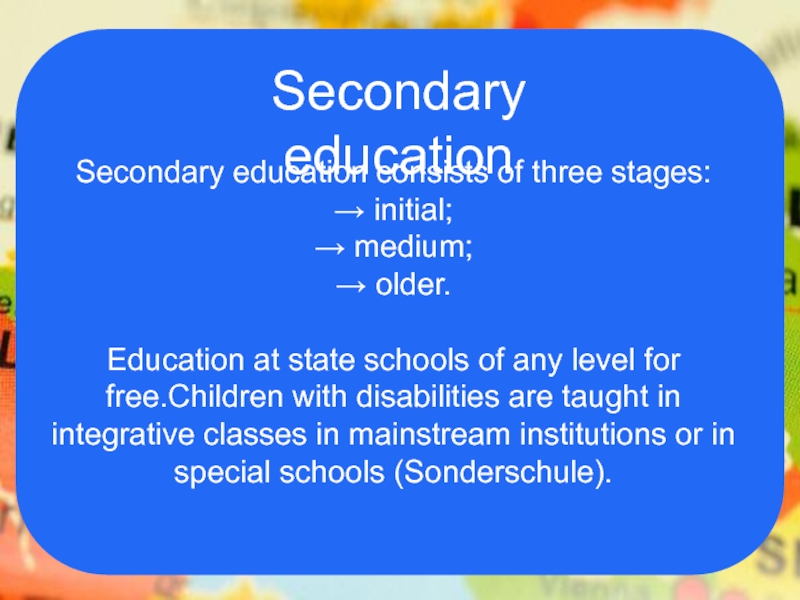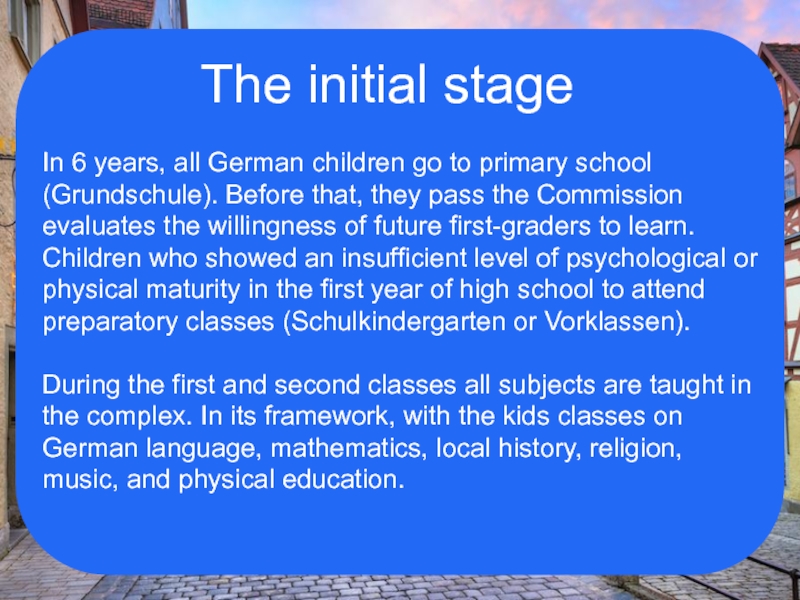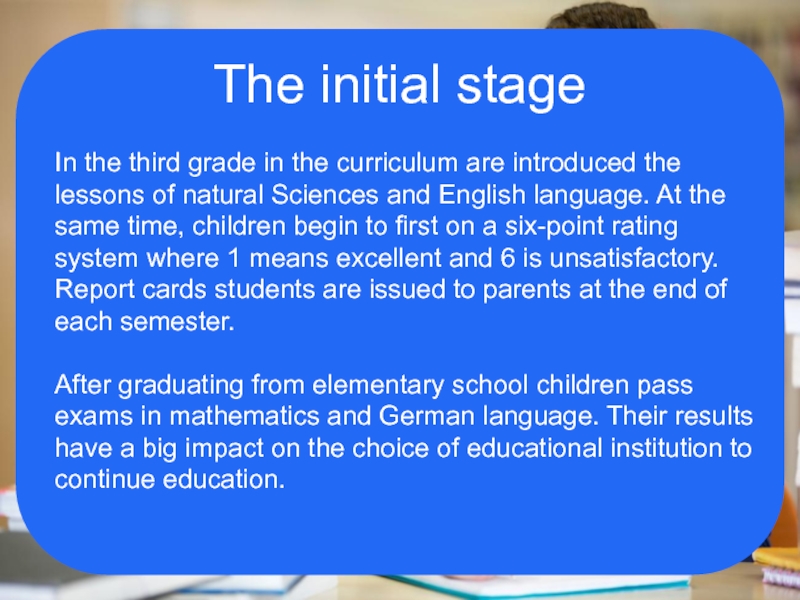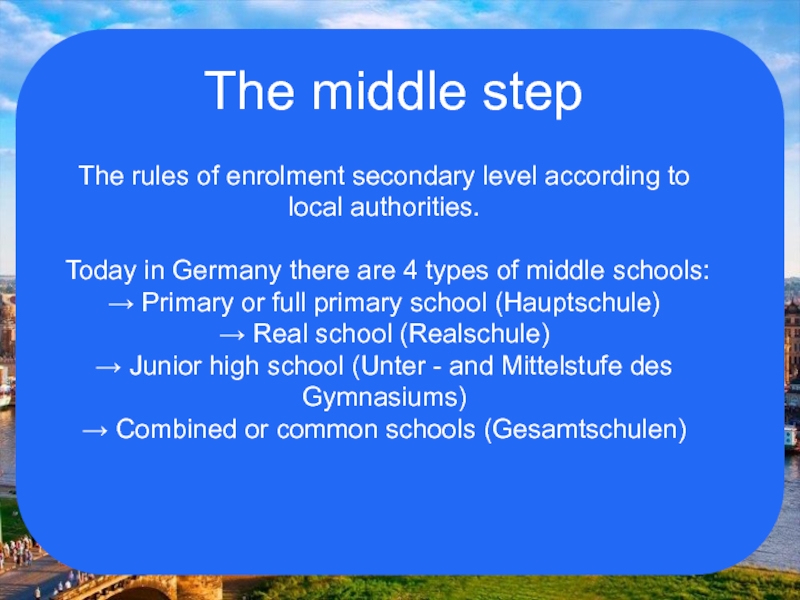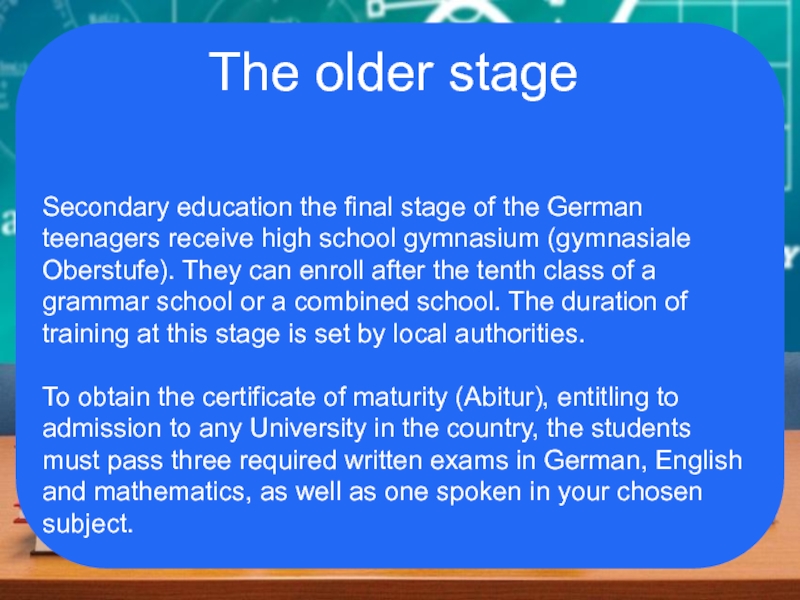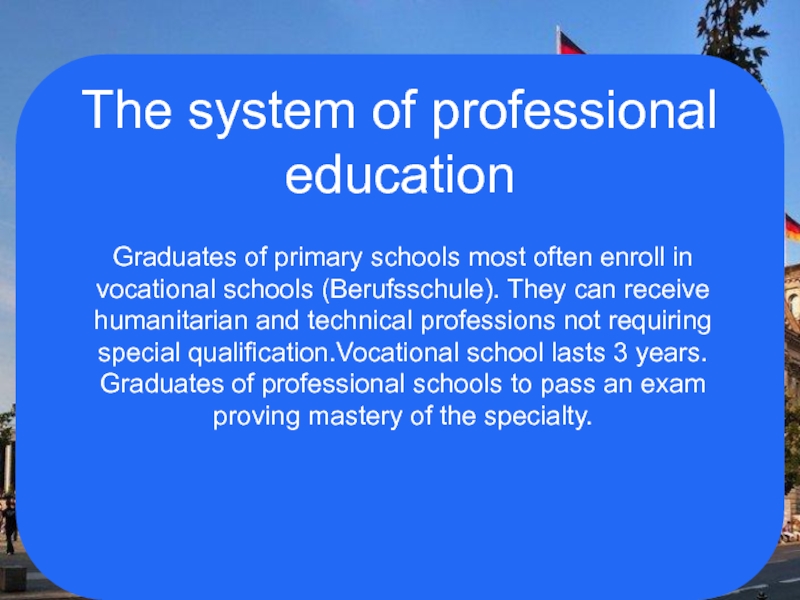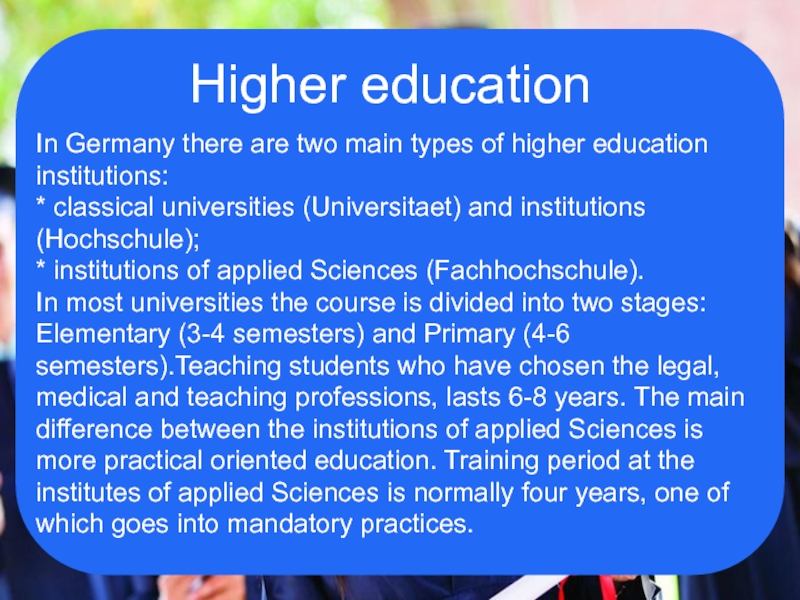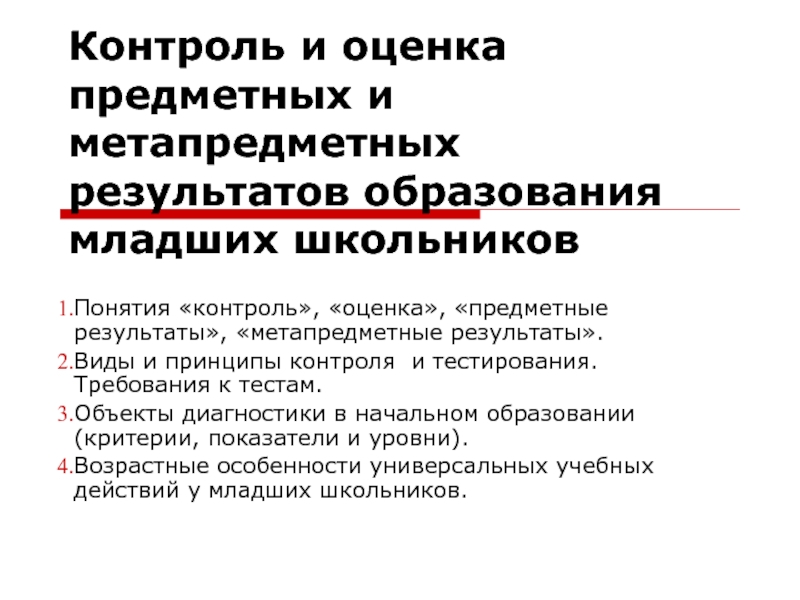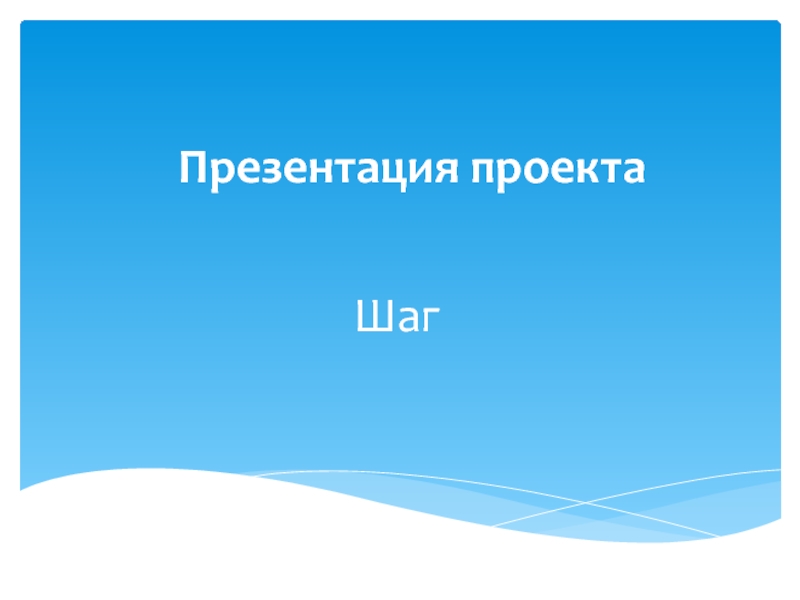- Главная
- Разное
- Дизайн
- Бизнес и предпринимательство
- Аналитика
- Образование
- Развлечения
- Красота и здоровье
- Финансы
- Государство
- Путешествия
- Спорт
- Недвижимость
- Армия
- Графика
- Культурология
- Еда и кулинария
- Лингвистика
- Английский язык
- Астрономия
- Алгебра
- Биология
- География
- Детские презентации
- Информатика
- История
- Литература
- Маркетинг
- Математика
- Медицина
- Менеджмент
- Музыка
- МХК
- Немецкий язык
- ОБЖ
- Обществознание
- Окружающий мир
- Педагогика
- Русский язык
- Технология
- Физика
- Философия
- Химия
- Шаблоны, картинки для презентаций
- Экология
- Экономика
- Юриспруденция
The education system in Germany презентация
Содержание
- 1. The education system in Germany
- 2. The educational system Preschool education Higher education Secondary education
- 3. Preschool education Most German children attend
- 4. Secondary education In Germany, the law
- 5. Secondary education Secondary education consists of
- 6. The initial stage In 6 years,
- 7. The initial stage In the third
- 8. The middle step The rules of
- 9. Secondary education the final
- 10. The system of professional education Graduates
- 11. In Germany there are two main
Слайд 3
Preschool education
Most German children attend preschool (Kindergarten) at the age of
Classes in German preschools are only in the form of a game. During children they teach to find a common language with their peers. In addition, pay great attention to the development of speech and figurative thinking.
Слайд 4
Secondary education
In Germany, the law on compulsory secondary education, according to
In Germany there is no uniform start dates. Each year the local authority to re-determine the first day of school. He usually falls at the end of August or beginning of September.
Слайд 5
Secondary education
Secondary education consists of three stages:
→ initial;
→ medium;
→ older.
Education at
Слайд 6
The initial stage
In 6 years, all German children go to primary
During the first and second classes all subjects are taught in the complex. In its framework, with the kids classes on German language, mathematics, local history, religion, music, and physical education.
Слайд 7
The initial stage
In the third grade in the curriculum are introduced
After graduating from elementary school children pass exams in mathematics and German language. Their results have a big impact on the choice of educational institution to continue education.
Слайд 8
The middle step
The rules of enrolment secondary level according to local
Today in Germany there are 4 types of middle schools:
→ Primary or full primary school (Hauptschule)
→ Real school (Realschule)
→ Junior high school (Unter - and Mittelstufe des Gymnasiums)
→ Combined or common schools (Gesamtschulen)
Слайд 9
Secondary education the final stage of the German teenagers receive high
To obtain the certificate of maturity (Abitur), entitling to admission to any University in the country, the students must pass three required written exams in German, English and mathematics, as well as one spoken in your chosen subject.
The older stage
Слайд 10
The system of professional education
Graduates of primary schools most often enroll
Слайд 11
In Germany there are two main types of higher education institutions:
* institutions of applied Sciences (Fachhochschule).
In most universities the course is divided into two stages: Elementary (3-4 semesters) and Primary (4-6 semesters).Teaching students who have chosen the legal, medical and teaching professions, lasts 6-8 years. The main difference between the institutions of applied Sciences is more practical oriented education. Training period at the institutes of applied Sciences is normally four years, one of which goes into mandatory practices.
Higher education

